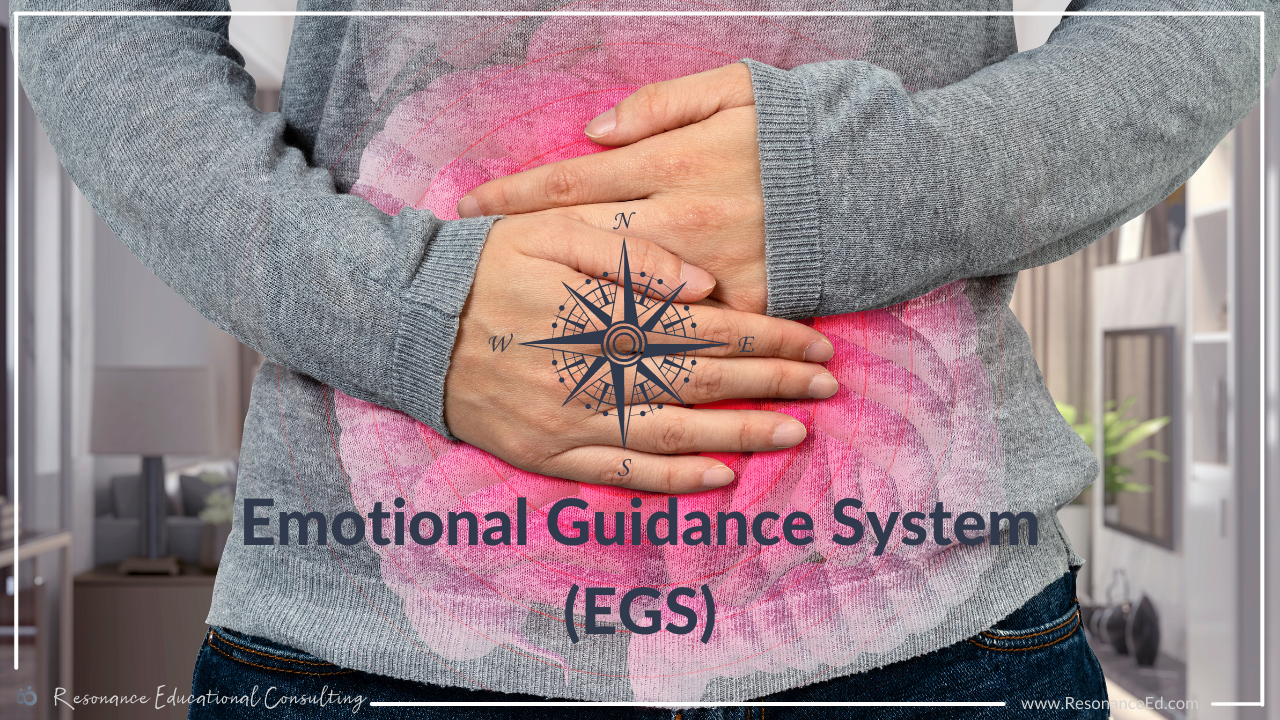019: Emotional Guidance System (EGS)
Mar 31, 2022
This week's blog is written by Resonance Ed's facilitator Maureen Zavadel.
Emotional Guidance System (EGS)
Are you struggling with making a difficult decision and feeling “lost” about the best decision for you? Then, I suggest you turn on your “emotional guidance system” (EGS), a term coined by author Esther Hicks, to help you find the best directions forward.
Suppose you are like me and are physically headed somewhere new. In that case, one of the essential steps I take is to plug the directions to where I am going into my favorite global positioning system (GPS) application, Waze. One of the main reasons I love using my GPS to get somewhere new is because it frees me of the anxious thoughts I often have about the process of traveling. Before driving to a new place, I find myself asking questions: “How long will this take for me to get there? What is the fastest way to my location? Are there other ways to go if the way I am going is under construction or there is an unexpected road closure?”
Even though this process could be done by using a paper map, one of the huge benefits of using my GPS while driving is that there are auditory and visual cues alerting me to the next step in the drive. By utilizing this navigational software when driving to unknown locations, I have transformed my feeling and thinking about this process from anxiety-provoking to genuine enjoyment. When driving with GPS, my job is to pay attention to the turn-by-turn cues given and trust in the process that I will safely reach my destination. With continued use of my GPS, I can now drive to an unknown place and enjoy the mental freedom to sing along to my favorite tunes or laugh aloud at comedy channels while driving.
Your body’s “emotional guidance system” (EGS) is similar to GPS in helping you navigate and reach your desired destination. However, instead of visual/auditory cues, your body provides physical signals to help you know if your decision-making is on the right track. Your body literally gives you the same kind of “turn by turn” direction cues by sending vibrations throughout your system, especially in your heart and your gut.
Still not sure what I mean? Try this simple exercise. Pick something general that you absolutely love, like your favorite food or activity. Now, say this phrase out loud three times and pause after each time, “I love ______.” Notice how your EGS kicks in, and pay attention to where your body sends you cues. When your thoughts and emotions connect in alignment, and they can acknowledge something to be 100% true for you, your body sends resonating feelings of warmth to your heart and gut areas. Now, to really test your EGS, say the exact phrase out loud but substitute the word “hate” for love. What cues is your EGS sending your body now? Did you notice a tightening or tense feeling in your chest or gut? This physical cue happens when your emotions are not aligned with what you are saying, thinking, or doing.
By utilizing your body’s internal navigational system, you begin to understand how to make important decisions that are congruent to your truth. We often feel most content, excited, and at peace when our thoughts, decisions, and actions align with our true feelings.
The next time you have to make a decision, I invite you to play out this exercise by substituting your options for the choices in your mind. Turn on your EGS and notice how each decision feels in your body when you state it aloud. Do you feel warmth and peace or tension and tightness? This kind of trust in your body’s process takes time. However, with acknowledgment and practice, your EGS can help guide you in finding your best way forward and may even become something that makes decision-making a more enjoyable process.

